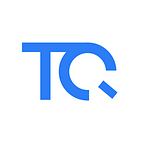Introducing Teztnets and Granada, Tezos’ Seventh Protocol Upgrade Proposal
The latest upgrade proposal builds on the Florence upgrade with Gas Cost Reductions, Emmy*, and Liquidity Baking
Scalability through governance is critical to the long term sustainability of blockchain networks. Tezos enters its seventh upgrade proposal, Granada, as the only blockchain network with a robust and efficient on-chain governance system for forkless upgrades. The evolving nature of Tezos’ self-amendmendable protocol and fully established governance mechanism enables upgrades to be regularly adopted by the community.
Protocol upgrades are voted on by bakers (validators who help power and govern the Tezos network), giving the community the power to build the future of Tezos.
Granada Upgrade
Granada focuses on a few key factors: reducing gas costs, improving Tezos finality, and the addition of liquidity baking.
Granada will decrease gas consumed by a factor of three to six (an average reduction of approximately 50 percent) in the execution of already deployed contracts. For some contracts, the improvement has been almost a factor of eight. This reduction in gas consumption will enable developers to deploy richer, more complex, and more dynamic applications on Tezos at reasonable, real-world cost.
Granada proposes to replace the current Tezos consensus algorithm Emmy+ with Emmy*. Emmy* stands to halve the time between blocks, from 60 seconds to 30 seconds, and allow transactions to achieve significantly faster finality than under the current consensus algorithm. Additionally, Granada introduces liquidity baking to the Tezos ecosystem.
Teztnets — A new model for upgrade testing
Alongside the Granada upgrade is the introduction of Teztnets.xyz, a versatile platform to deploy Tezos testnets. Testing upgrades is dependent on coordination between ecosystem participants, validators, developers, and community members; Teznets helps streamline this process across participants.
Protocol upgrades often require upgrades of the outer part of the Tezos node software (also known as the shell). It means that node operators need to upgrade their software in a traditional sense, by downloading the latest version, for the protocol upgrade to work.
Moving forward, autonomous entities will be able to automatically deploy baking nodes when a new Teztnet comes online, including testnets for protocol proposals. This will allow block explorers and snapshot services to automatically support testnets when they become available and smart contract and dapp builders to automatically test their products against innovations happening at the protocol level.
Developers and community members can visit Teztnets.xyz for everything related to Tezos testnets. There you can see which testnets are currently deployed, with instructions on how to join them as a participant or baker. The github repository where Teztnets are declared allows anyone to submit a PR to define a new Teztnet. Upon acceptance and merge by the maintainers, the new Teztnet will launch.
The Teztnets platform is friendly to humans and machines. A json endpoint lists the currently deployed Teztnets. For every deployed Teztnet, the platform runs a bootstrap baker and exposes the node p2p endpoint. The Teztnet platform source code itself is fully open source and relies on the Tezos-k8s open-source project.
